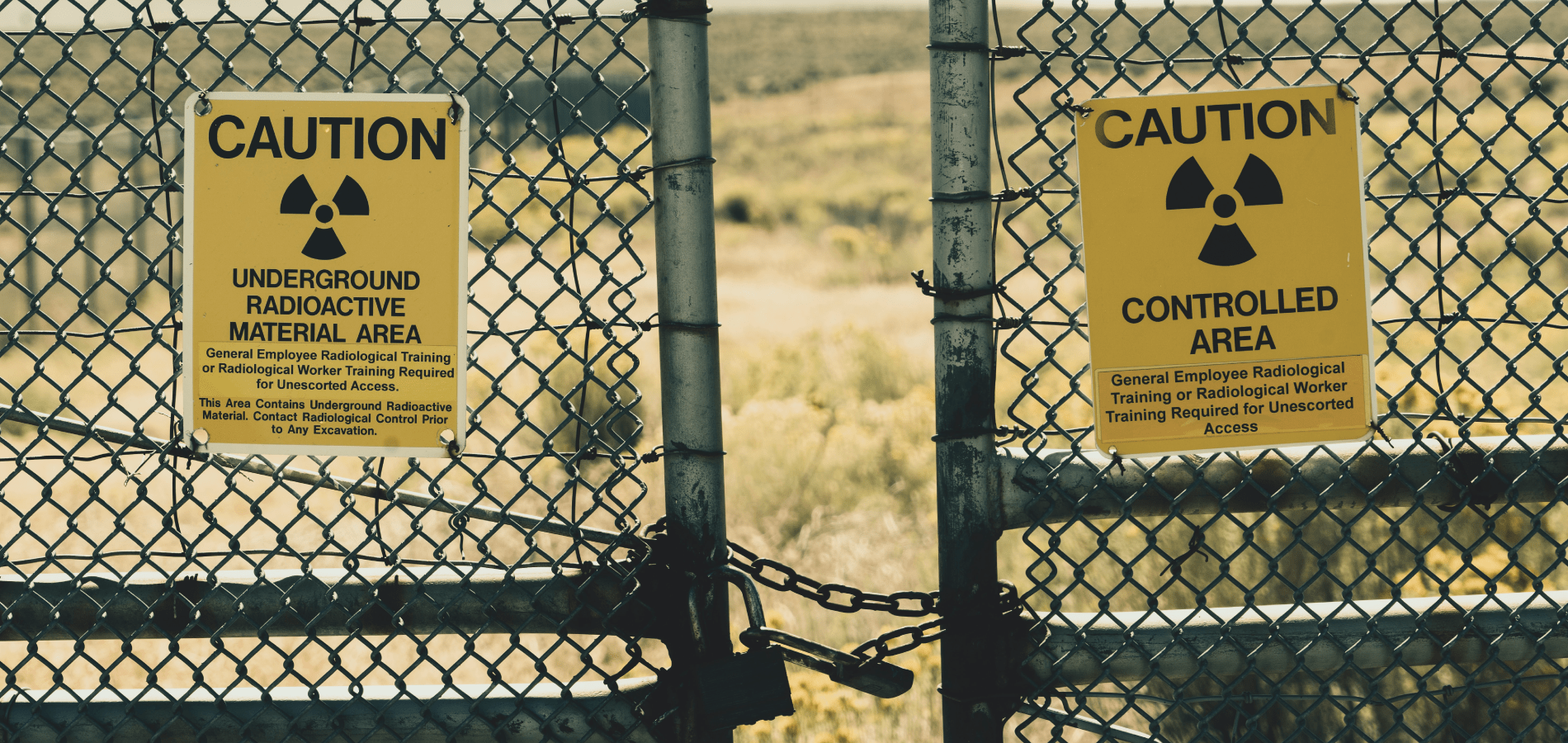In the early 1800s, the United States was a lot smaller, and Mexico was a lot larger. But when America’s pursuit of Manifest Destiny collided with Mexican interest, all out war broke out, leading to the Mexican-American War. The conflict only lasted two years, but it would shape the future of both of these neighbor nations. In this month’s edition of Secrets of the Serial Set, we use the essential U.S. Congressional Serial Set to dive into this short-lived but impactful war.
Annexing Texas
Some 300 American families, led by Moses Austin and then his son Stephen Austin, began settling in Mexican-owned Texas in the early 1800s[1]“Acceptance of Statues of Sam Houston and Stephen F. Austin [bound with Senate Documents].” U.S. Congressional Serial Set, , 1904, pp. 1-144. HeinOnline, … Continue reading with a commission from the Spanish governor of Texas. Once Mexico gained independence from Spain, the new Mexican government continued to encourage Anglo-American immigration to Texas. However, as Americans began to populate Texas and outnumber Mexicans, Mexican President Vicente Guerrero attempted to assert Mexican control over the area by abolishing slavery in all Mexican territories, reinstating tariffs, and other changes. Texans did not like these policies, so Mexico closed off the territory to any additional American settlers.[2]“Presidential message upon annexation of Texas to United States.” U.S. Congressional Serial Set, , 1837, pp. 1-18. HeinOnline, https://heinonline.org/HOL/P?h=hein.usccsset/usconset37999&i=846. This document can be … Continue reading
Thus was the stage set for the Texas Revolution, when Texans revolted against Mexico, declaring independence in 1836. The Texans were defeated at the Battle of the Alamo,[3]“Presidential message upon annexation of Texas to United States.” U.S. Congressional Serial Set, , 1837, pp. 1-18. HeinOnline, https://heinonline.org/HOL/P?h=hein.usccsset/usconset37999&i=848. This document can be … Continue reading but the Texans fought back and won at the Battle of San Jacinto,[4]“The Subject of the Political, Military, and Civil Condition of Texas.” U.S. Congressional Serial Set, , 1836, pp. 1-34. HeinOnline, https://heinonline.org/HOL/P?h=hein.usccsset/usconset00302&i=495. This document can … Continue reading where General Antonio López de Santa Anna was captured and forced to sign the Treaty of Velasco,[5]Wallace, Ernest, and David M. Vigness, Editors. Documents of Texas History. Austin, Texas, Steck Company. HeinOnline, https://heinonline.org/HOL/P?h=hein.ustexasoth/dusotshy0001&i=127. This document can be found in HeinOnline’s … Continue reading ending the conflict and recognizing Texan independence.
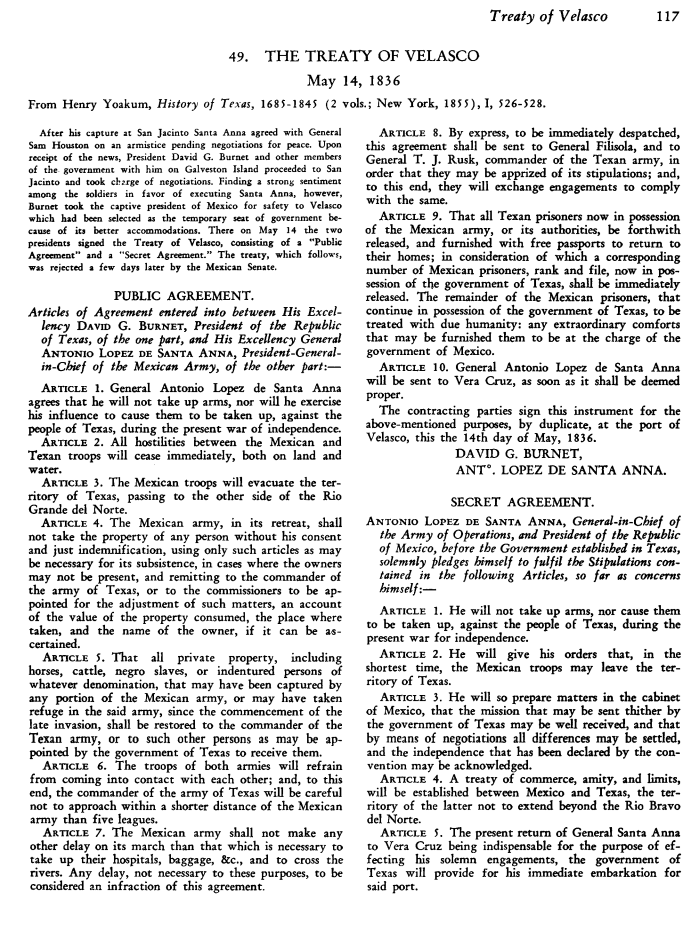
Stirrings of War
Mexico refused to recognize the Treaty of Velasco[6]Daniel James. Mexico and the Americans (1963). This document can be found in HeinOnline’s World Constitutions Illustrated database. because it was signed under force, but the U.S., Britain, and France all accepted Texas as an independent country. The U.S. sought to annex Texas, despite protest from Northerners who argued that adding Texas would upset the balance of power between the Northern free states and Southern slave states.[7]“Legislature of Massachusetts on admission of Texas.” U.S. Congressional Serial Set, , 1845, pp. 1-2. HeinOnline, https://heinonline.org/HOL/P?h=hein.usccsset/usconset00482&i=1018. This document can be found in … Continue reading When President James Polk was elected under a campaign supporting Manifest Destiny, he further pushed to annex Texas as well as other land from Mexico.
The United States annexed Texas on December 29, 1845—however, Mexico and the United States disagreed on the southern boundary of Texas. America believed it was the Rio Grande. Mexico claimed it was the more northern Nueces River.[8]“Message from the President of the United States to the Two Houses of Congress.” U.S. Congressional Serial Set, , 1846, pp. 1-704. HeinOnline, https://heinonline.org/HOL/P?h=hein.usccsset/usconset00497&i=462. This … Continue reading President Polk also sought to purchase the land from Texas to California and offered Mexico $25 million—Mexico turned the offer down. Soon, U.S. troops showed up at the Rio Grande.[9]“Map showing operations of army in Texas and adjacent Mexican States on Rio Grande, accompanied by astronomical observations, and descriptive and military memoirs of country.” U.S. Congressional Serial Set, , 1849, pp. … Continue reading Mexico staged an attack on April 25, 1846, leading America to declare war.
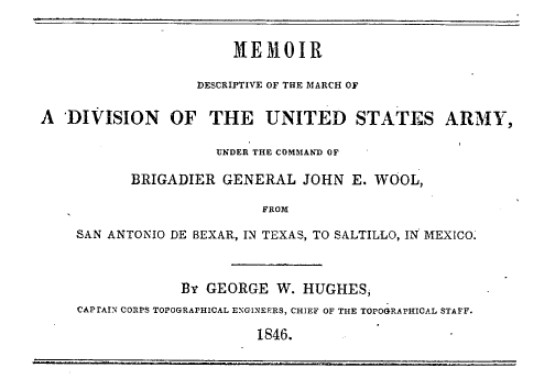
Mexico’s Struggles
1846 was not a great time for Mexico to go to war. The country was rife with political divisions, presidents that lasted a few months to a few days, and its army suffered from lack of training and from outdated weaponry. They were no match for the much more organized American troops. The U.S. quickly captured Santa Fe de Nuevo Mexico and parts of California. Then, troops proceeded to invade Mexico’s mainland, where they captured Mexico City in September of 1847.[10]“Compilation of messages and papers of Presidents, 1789-1897, volume 10: appendix and Index.” U.S. Congressional Serial Set, , 1893, pp. I-678. HeinOnline, … Continue reading
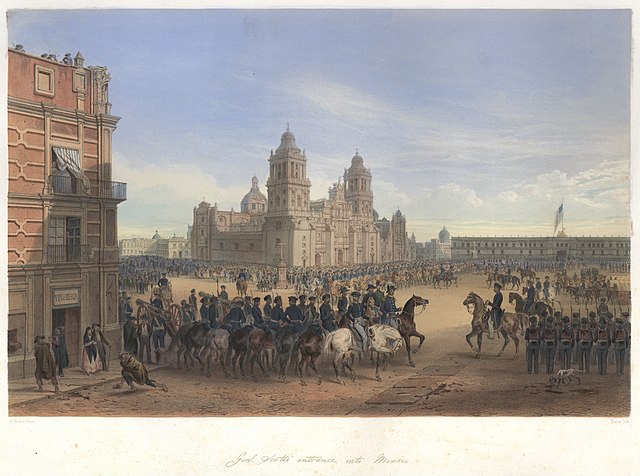
In 1848, the U.S. and Mexico signed the Treaty of Guadalupe Hidalgo,[11]Guadalupe Hidalgo, treaty of (Peace, friendship, limits, and settlement), . 9 Stat. 922 (1848). This document can be found in HeinOnline’s U.S. Statutes at Large database. which ended the war and forced Mexico to give up what is now California, Nevada, and Utah, as well as parts of Arizona, Colorado, New Mexico, and Wyoming. In return, the U.S. provided Mexico with $15 million for damages incurred by the war, as well as assumed a couple million dollars of debt. The treaty also gave Texas to the U.S., with the Rio Grande as the border between America and Mexico.
Lasting Consequences
With the Treaty of Guadalupe Hidalgo, the United States added about 525,000 square miles of territory. However, tensions built over whether the states created from this new territory would be “slave states” or “free states.”[12]“Motion for adjustment of questions of slavery, etc., in territories acquired from Mexico, and of boundary of Texas, 3 pts.” U.S. Congressional Serial Set, , 1849, pp. 1-2. HeinOnline, … Continue reading The Wilmot Proviso, which would have forbidden slavery in the new Mexican territory,[13]“Resolution in relation to convention of the several States on slavery.” U.S. Congressional Serial Set, , 1860, pp. 1-2. HeinOnline, https://heinonline.org/HOL/P?h=hein.usccsset/usconset37253&i=371. This document can … Continue reading was not adopted by Congress, but Northern states still wanted there to be a balance between which states would allow versus not allow slavery, even though most of the acquired territory was below the Mason-Dixon line which up to that time had divided the North (free states) and South (slave states). Some historians therefore view the Mexican-American War as a vital step toward the American Civil War.
Meanwhile, Mexico suffered heavily in the aftermath of the war. The physical and financial damage in the country was significant, and the loss of such a large amount of land damaged the morale of the nation as well.
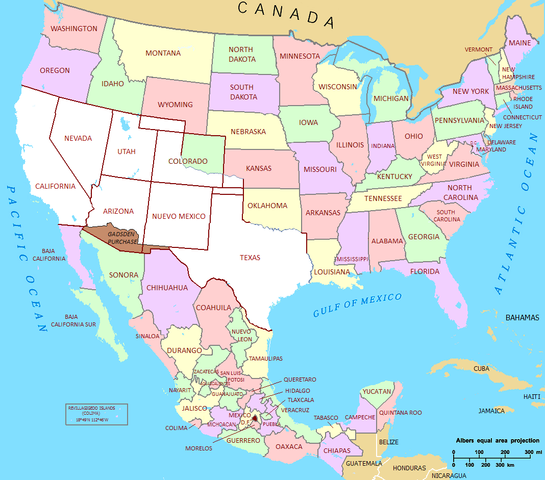
Unlocking the Secrets of the Serial Set
Secrets of the Serial Set is an exciting and informative blog series from HeinOnline dedicated to unveiling the wealth of American history found in the United States Congressional Serial Set. Documents from additional HeinOnline databases have been incorporated to supplement research materials for non-U.S. related events discussed.
HeinOnline Sources[+]
| ↑1 | “Acceptance of Statues of Sam Houston and Stephen F. Austin [bound with Senate Documents].” U.S. Congressional Serial Set, , 1904, pp. 1-144. HeinOnline, https://heinonline.org/HOL/P?h=hein.usccsset/usconset30564&i=357. This document can be found in HeinOnline’s U.S. Congressional Serial Set. |
|---|---|
| ↑2 | “Presidential message upon annexation of Texas to United States.” U.S. Congressional Serial Set, , 1837, pp. 1-18. HeinOnline, https://heinonline.org/HOL/P?h=hein.usccsset/usconset37999&i=846. This document can be found in HeinOnline’s U.S. Congressional Serial Set. |
| ↑3 | “Presidential message upon annexation of Texas to United States.” U.S. Congressional Serial Set, , 1837, pp. 1-18. HeinOnline, https://heinonline.org/HOL/P?h=hein.usccsset/usconset37999&i=848. This document can be found in HeinOnline’s U.S. Congressional Serial Set. |
| ↑4 | “The Subject of the Political, Military, and Civil Condition of Texas.” U.S. Congressional Serial Set, , 1836, pp. 1-34. HeinOnline, https://heinonline.org/HOL/P?h=hein.usccsset/usconset00302&i=495. This document can be found in HeinOnline’s U.S. Congressional Serial Set. |
| ↑5 | Wallace, Ernest, and David M. Vigness, Editors. Documents of Texas History. Austin, Texas, Steck Company. HeinOnline, https://heinonline.org/HOL/P?h=hein.ustexasoth/dusotshy0001&i=127. This document can be found in HeinOnline’s U.S. Congressional Serial Set. |
| ↑6 | Daniel James. Mexico and the Americans (1963). This document can be found in HeinOnline’s World Constitutions Illustrated database. |
| ↑7 | “Legislature of Massachusetts on admission of Texas.” U.S. Congressional Serial Set, , 1845, pp. 1-2. HeinOnline, https://heinonline.org/HOL/P?h=hein.usccsset/usconset00482&i=1018. This document can be found in HeinOnline’s U.S. Congressional Serial Set. |
| ↑8 | “Message from the President of the United States to the Two Houses of Congress.” U.S. Congressional Serial Set, , 1846, pp. 1-704. HeinOnline, https://heinonline.org/HOL/P?h=hein.usccsset/usconset00497&i=462. This document can be found in HeinOnline’s U.S. Congressional Serial Set. |
| ↑9 | “Map showing operations of army in Texas and adjacent Mexican States on Rio Grande, accompanied by astronomical observations, and descriptive and military memoirs of country.” U.S. Congressional Serial Set, , 1849, pp. 1-[x]. HeinOnline, https://heinonline.org/HOL/P?h=hein.usccsset/usconset37424&i=99. This document can be found in HeinOnline’s U.S. Congressional Serial Set. |
| ↑10 | “Compilation of messages and papers of Presidents, 1789-1897, volume 10: appendix and Index.” U.S. Congressional Serial Set, , 1893, pp. I-678. HeinOnline, https://heinonline.org/HOL/P?h=hein.usccsset/usconset25930&i=504. This document can be found in HeinOnline’s U.S. Congressional Serial Set. |
| ↑11 | Guadalupe Hidalgo, treaty of (Peace, friendship, limits, and settlement), . 9 Stat. 922 (1848). This document can be found in HeinOnline’s U.S. Statutes at Large database. |
| ↑12 | “Motion for adjustment of questions of slavery, etc., in territories acquired from Mexico, and of boundary of Texas, 3 pts.” U.S. Congressional Serial Set, , 1849, pp. 1-2. HeinOnline, https://heinonline.org/HOL/P?h=hein.usccsset/usconset37427&i=283. This document can be found in HeinOnline’s U.S. Congressional Serial Set. |
| ↑13 | “Resolution in relation to convention of the several States on slavery.” U.S. Congressional Serial Set, , 1860, pp. 1-2. HeinOnline, https://heinonline.org/HOL/P?h=hein.usccsset/usconset37253&i=371. This document can be found in HeinOnline’s U.S. Congressional Serial Set. |

